Conrad Alleman
Conrad Alleman
Graduate Student
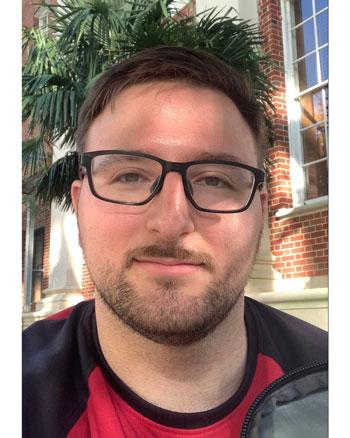




About Professor Hassan
Saad Hassan obtained his PhD from the Golisano College of Computing and Information Sciences at the Rochester Institute of Technology in 2023. His research centers on Accessible Computing, Human-Computer Interaction (HCI), and Computational Social Science, with a focus on technologies to promote inclusion, facilitate learning, and encourage creative expression among individuals with disabilities. During his graduate studies, Saad worked as a research scientist intern at Google AI and Meta Reality Labs, where he helped develop and deploy innovative technologies. Saad's research has been featured in prestigious computing conferences and journals, including the ACM Conference on Human Factors in Computing Systems (CHI), the ACM SIGACCESS Conference on Computers and Accessibility (ASSETS), the ACM Transactions on Accessible Computing (TACCESS), and the Conference on Empirical Methods in Natural Language Processing (EMNLP). Currently, he serves as a program committee member for CHI and ASSETS.
Research Interests
Accessible Computing, Human-Computer Interaction (HCI), and Computational Social Science, with a focus on AI-powered technologies to facilitate inclusion, learning, and creative expression for individuals with disabilities.
Office
307 Paul Hall
Courses Taught
CMPS 4661/CMPS 6663: Human-Computer Interaction
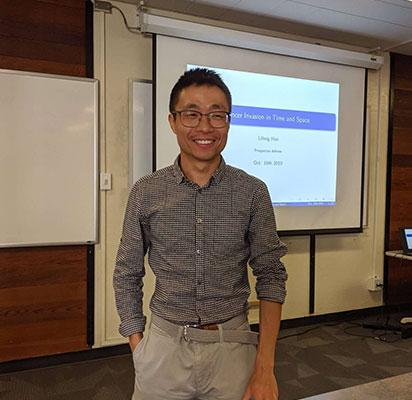
Mathematical Biology
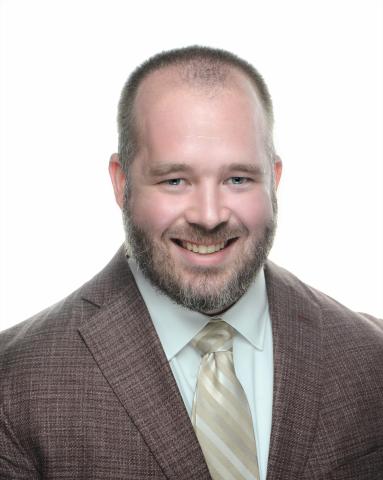
As an undergraduate, Daniel P. Howsmon majored in both chemical engineering and biochemistry at Texas A&M University where he became fascinated with using computational techniques to solve problems in medicine. He then went on to earn a Ph.D. in Chemical and Biological Engineering at Rensselaer Polytechnic Institute where he developed fault detection techniques for insulin infusion pumps and identified combinations of plasma metabolites that may be informative for diagnosing autism spectrum disorder. For his postdoctoral work, he joined the Oden Institute for Computational Engineering and Sciences at the University of Texas at Austin where he modeled signal transduction pathways relevant to heart valve diseases. He joined the Department of Chemical and Biomolecular Engineering at Tulane University as an assistant professor in 2023.
29. A. Khang, Q. Nguyen, X. Feng, D. P. Howsmon, and M. S. Sacks, “Three-dimensional analysis of aortic valve interstitial cell shape and its relation to contractile behavior,” Acta Biomateriala, vol. 163, pp. 194–209, Jun. 2023. doi: 10.1016/j.actbio.2022.01.039
28. T. M. West, D. P. Howsmon, M. W. Messida, H. N. Vo, A. A. Janobas, A. B. Baker, and M. S. Sacks, “The effects of strain rate and level on aortic valve interstitial cell activation in a 3D hydrogel,” APL Bioengineering, vol. 7, no. 2, p. 026 101, 2023. doi: 10.1063/5.0138030 FEATURED ARTICLE
27. L. Bansal, E.-M. Nichols, D. P. Howsmon, J. Neisen, F. Cunningham, S. Petit-Frere, S. Ludbrook, and V. Damian, “Mathematical modeling of complement pathway dynamics for target validation and selection of drug modalities for complement therapies,” Frontiers in Pharmacology, vol. 13, p. 855 743, Apr. 2022. doi: 10.3389/fphar.2022.855743
26. A. Khang*, E. M. Lejeune*, A. Abbaspour, D. P. Howsmon, and M. S. Sacks, “On the 3D correlation between myofibroblast shape and contraction,” Journal of Biomechanical Engineering, vol. 143, no. 9, p. 094 503, Sep. 2021. doi: 10.1115/1.4050915
25. E. Castillero, D. P. Howsmon, B. V. Rego, Y. Xue, C. Camillo, S. Keeney, K. H. Driesbaugh, T. Kawashima, George, R. C. Gorman, J. H. Gorman III, M. S. Sacks, R. J. Levy, and G. Ferrari, “Altered responsiveness to TGF-β and BMP and increased CD45+ cell presence in mitral valves are unique features of ischemic mitral regurgitation,” Arteriosclerosis, Thrombosis, and Vascular Biology, vol. 41, no. 6, pp. 2049–2062, Jun. 2021. doi: 10.1161/ATVBAHA.121.316111 EDITOR’S PICK
24. D. P. Howsmon and M. S. Sacks, “On valve interstital cell signaling: The link between multiscale mechanics and mechanobiology,” Cardiovascular Engineering and Technology, vol. 12, pp. 15–27, Feb. 2021. doi: 10.1007/s13239-020-00509-4
23. K. M. Kodigepalli, K. Thatcher, T. West, D. P. Howsmon, F. J. Schoen, M. S. Sacks, C. K. Breuer, and J. Lincoln, “Biology and biomechanics of heart valve extracellular matrix,” Journal of Cardiovascular Development and Disease, vol. 7, no. 4, p. 57, Dec. 2020. doi: 10.3390/jcdd7040057
22. S. Ayoub, D. P. Howsmon, C.-H. Lee, and M. S. Sacks, “On the role of predicted mitral valve interstitial cell deformation on its biosynthetic behavior,” Biomechanics and Modeling in Mechanobiology, Aug. 2020. doi: 10.1007/s10237-020-01373-w
21. D. P. Howsmon*, B. V. Rego*, E. Castillero, S. Ayoub, A. H. Khalighi, R. C. Gorman, J. H. Gorman III, G. Ferrari, and M. S. Sacks, “Mitral valve leaflet response to ischaemic mitral regurgitation: From gene expression to tissue remodeling,” Journal of the Royal Society Interface, vol. 17, no. 165, p. 20 200 098, May 2020. doi: 10.1098/rsif.2020.0098
20. D. P. Howsmon*, S. M. Quinn*, J. Hahn, and S. P. Gilbert, “Kinesin-2 heterodimerization alters catalytic properties to control entry into the processive run,” Journal of Biological Chemistry, vol. 293, no. 35, pp. 13 389–13 400, Jul. 2018. doi: 10.1074/jbc.RA118.002767
19. D. P. Howsmon, T. Vargason, R. A. Rubin, S. Melnyk, S. J. James, R. Frye, and J. Hahn, “Multivariate techniques enablea biochemical classification of children with autism spectrum disorder versus typically-developing peers: A comparison and validation study,” Bioengineering and Translational Medicine, vol. 3, no. 2, pp. 156–165, May 2018. doi: 10.1002/btm2.10095 TOP CITED ARTICLE 2018 – 2019
18. T. Vargason, D. P. Howsmon, and J. Hahn, “From data to diagnosis: The search for biochemical markers of autism spectrum disorder,” Chemical Engineering Progress, vol. 114, no. 5, pp. 40–45, May 2018
17. G. P. Forlenza, F. M. Cameron, T. T. Ly, D. Lam, D. P. Howsmon, N. Baysal, G. Kulina, L. Messer, P. Clinton, C. Levister, S. D. Patek, C. J. Levy, R. P. Wadwa, D. M. Maahs, B. W. Bequette, and B. A. Buckingham, “Fully closed-loop multiple model probabilistic predictive controller artificial pancreas performance in adolescents and adults in a supervised hotel setting,” Diabetes Technology & Therapeutics, vol. 20, no. 5, pp. 335–343, May 2018. doi: 10.1089/dia.2017.0424
16. D. P. Howsmon, N. Baysal, B. A. Buckingham, G. P. Forlenza, T. T. Ly, D. M. Maahs, T. Marcal, L. Towers, E. Mauritzen, S. Deshpande, L. M. Huyett, J. E. Pinsker, R. Gondhalekar, F. J. Doyle III, E. Dassau, J. Hahn, and B. W. Bequette, “Real-time detection of infusion site failures in a closed-loop artificial pancreas,” Journal of Diabetes Science and Technology, vol. 12, no. 3, May 2018. doi: 10.1177/1932296818755173
15. D. P. Howsmon, J. B. Adams, U. Kruger, E. Geis, E. Gehn, and J. Hahn, “Erythrocyte fatty acid profiles in children are not predictive of autism spectrum disorder status: A case control study,” Biomarker Research, vol. 6, p. 12, Mar. 2018. doi: 10.1186/s40364-018-0125-z
14. D.-W. Kang, Z. E. Ilhan, N. G. Isern, D. W. Hoyt, D. P. Howsmon, M. Shaffer, C. A. Lozupone, J. Hahn, J. B. Adams, and R. Krajmalnik-Brown, “Differences in fecal microbial metabolites and microbiota of children with autism spectrum disorders,” Anaerobe, vol. 49, pp. 121–131, Feb. 2018. doi: 10.1016/j.anaerobe.2017.12.007
13. D. P. Howsmon*, S. Steinmeyer*, R. C. Alaniz, J. Hahn, and A. Jayaraman, “Empirical modeling of t cell activation predicts interplay of host cytokines and bacterial indole,” Biotechnology and Bioengineering, vol. 114, no. 11, pp. 2660–2667, Nov. 2017. doi: 10.1002/bit.26371
12. F. M. Cameron, T. T. Ly, B. A. Buckingham, D. M. Maahs, G. P. Forlenza, C. J. Levy, D. Lam, P. Clinton, L. H. Messer, E. Westfall, C. Levister, Y. Y. Xie, N. Baysal, D. Howsmon, S. D. Patek, and B. W. Bequette, “Closed-loop control without meal announcement in type 1 diabetes,” Diabetes Technology & Therapeutics, vol. 19, no. 9, pp. 527–532, Aug. 2017. doi: 10.1089/dia.2017.0078
11. G. P. Forlenza*, S. Deshpande*, T. T. Ly, D. P. Howsmon, F. Cameron, N. Baysal, E. Mauritzen, T. Marcal, L. Towers, B. W. Bequette, L. M. Huyett, J. E. Pinsker, R. Gondhalekar, F. J. Doyle, D. M. Maahs, B. A. Buckingham, and E. Dassau, “Application of zone model predictive control artificial pancreas during extended use of infusion set and sensor: A randomized crossover-controlled home-use trial,” Diabetes Care, p. dc170500, Jun. 2017. doi: 10.2337/dc17-0500
10. T. Vargason, D. P. Howsmon, D. L. McGuinness, and J. Hahn, “On the use of multivariate methods for analysis of data from biological networks,” Processes, vol. 5, no. 3, p. 36, Jul. 2017. doi: 10.3390/pr5030036
9. D. P. Howsmon, U. Kruger, S. Melnyk, S. J. James, and J. Hahn, “Classification and adaptive behavior prediction of children with autism spectrum disorder based upon multivariate data analysis of markers of oxidative stress and DNA methylation,” PLoS Computational Biology, vol. 13, no. 3, e1005385, Mar. 2017. doi: 10.1371/journal.pcbi.1005385 JOURNAL COVER
8. T. Vargason, D. P. Howsmon, S. Melnyk, S. J. James, and J. Hahn, “Mathematical modeling of the methionine cycle and transsulfuration pathway in individuals with autism spectrum disorder,” Journal of Theoretical Biology, vol. 416, pp. 28–37, Mar. 2017. doi: 10.1016/j.jtbi.2016.12.021
7. D. P. Howsmon, F. Cameron, N. Baysal, T. T. Ly, G. P. Forlenza, D. M. Maahs, B. A. Buckingham, J. Hahn, and B. W. Bequette, “Continuous glucose monitoring enables the detection of losses in infusion set actuation (LISAs),” Sensors, vol. 17, no. 1, p. 161, Jan. 2017. doi: 10.3390/s17010161
6. J. Adams, D. P. Howsmon, U. Kruger, E. Geis, E. Gehn, V. Fimbres, E. Pollard, J. Mitchell, J. Ingram, R. Hellmers, D. Quig, and J. Hahn, “Significant association of urinary toxic metals and autism-related symptoms – A nonlinear statistical analysis with cross validation,” PLoS ONE, vol. 12, no. 1, e0169526, Jan. 2017. doi: 10.1371/journal.pone.0169526
5. B. W. Bequette, F. Cameron, N. Baysal, D. Howsmon, B. Buckingham, D. Maahs, and C. Levy, “Algorithms for a single hormone closed-loop artificial pancreas: Challenges pertinent to chemical process operations and control,” Processes, vol. 4, no. 4, p. 39, Oct. 2016. doi: 10.3390/pr4040039
4. D. P. Howsmon and J. Hahn, “Regularization techniques to overcome over-parameterization of complex biochemical reaction networks,” IEEE Life Sciences Letters, vol. 2, no. 3, pp. 31–34, Sep. 2016. doi: 10.1109/LLS.2016.2646498
3. D. Howsmon*, J. G. Zheng*, B. Zhang, J. Hahn, D. McGuinness, J. Hendler, and H. Ji, “Entity linking forbiomedical literature,” BMC Medical Informatics and Decision Making, vol. 15, S4, Suppl 1 May 2015. doi: 10.1186/1472-6947-15-S1-S4
2. D. Howsmon and B. W. Bequette, “Hypo- and hyperglycemic alarms: Devices and algorithms,” Journal of Diabetes Science and Technology, vol. 9, no. 5, pp. 1126–1137, Apr. 2015. doi: 10.1177/1932296815583507
1. C. Klemashevich, C. Wu, D. Howsmon, R. C. Alaniz, K. Lee, and A. Jayaraman, “Rational identification of diet-derived postbiotics for improving intestinal microbiota function,” Current Opinion in Biotechnology, vol. 26, pp. 85–90, Apr. 2014. doi: 10.1016/j.copbio.2013.10.006
Our group uses both data-driven and mechanistic models within a process systems engineering framework to provide actionable insights into dynamic systems in biology, pharmacology, and medicine. Currently, our focus is in cardiac and fibrosis applications.
In data-rich, knowledge-poor environments, we leverage data-driven models for prediction and comparison. For example, we may not know why patients’ vital signs and hemodynamics change the way they do following specific surgeries (knowledge-poor). However, given high-frequency, high-fidelity historical data, we can develop data-driven models that compare our current patient’s trajectory to a history of patient trajectories with positive clinical outcomes (data-rich).
In knowledge-rich environments, we leverage mechanistic models for prediction and experimental design. For example, we can leverage the wealth of enzymatic, binding, and localization properties of proteins to develop mechanistic models that typically have better extrapolation properties than data-driven counterparts. Moreover, we can reuse the entire model or pieces of various models for new applications and interrogate parameters, which are physically meaningful. Process systems engineering is necessarily interdisciplinary, and we leverage collaborations with biologists, pharmacists, and clinicians to inform our research directions. Additionally, we have our own cell culture space for collecting data necessary for informing our mechanistic cell signaling research and highlighting various process systems engineering techniques.
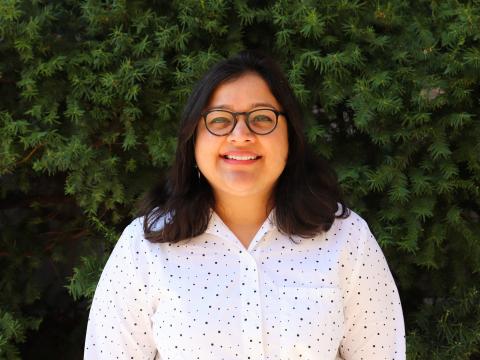
Evolutionary biology, population genetics, plant-insect interactions and genomics.
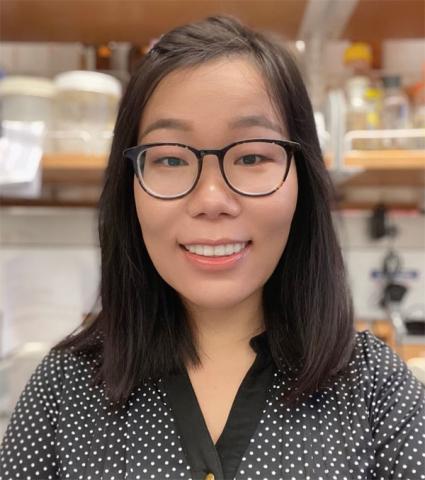
Dr. Shuaihua Gao obtained a B.S. in Pharmaceutical Engineering from the Beijing University of Chemical and Technology where she did her undergraduate research with Prof. Guojun Zheng. During her undergraduate years, she studies the application of gamma-lactamase for the biosynthesis of anti-HIV drugs. After finishing her B.S., she started her PhD under the guidance of Prof. Guojun Zheng to focused on using microbial screening and genome mining methods to identify novel gamma-lactamases used for enantioselective reactions in preparation of anti-HIV drugs. In particular, she developed a high throughput colorimetric screening method for lactamase identification and protein engineering.
Dr. Gao joined Judith Klinman lab after finishing her PhD work within 3 years. In Klinman lab, she switched gears from translational science to basic science where she studied the fundamental and physical basis of enzyme catalysis. After obtaining her PhD, Dr. Gao returned to Klinman lab as a postdoc to continue studying the significance of protein dynamics in enzyme catalysis. She developed temperature dependent hydrogen deuterium exchange couple to mass spectrometry (TD-HDX-MS) to investigate the correlation between protein dynamics and enzyme efficiency.
Gao started her independent career in the Department of Chemical and Biomolecular Engineering at Tulane University in summer 2023. By integrating pharmaceutical chemistry, biochemistry, enzymology, protein engineering and bioinformatics, the Gao lab is tackling the problems in the world of both translational and basic science.
Protein engineering for biomedical applications. We perform protein engineering on a variety of naturally occurring proteins to enhance their catalytic performance via rapid cell-free protein synthesis and in vivo continuous directed evolution methodologies. One of the targeted proteins will be fluorinase that demonstrates application in radiotracer preparation for PET (positron emission tomography) scan to detect cancer cells.
Biosynthetic engineering for novel therapeutics. We focus on developing metabolic pathways to produce valuable molecules, engineering genetic systems to control pathways, and exploring fundamental questions in biochemistry and microbial biology. A case study will be rational design of non-ribosomal peptide synthetases (NRPS) microbial machineries to produce fluorinated novel NRPS products for antitumors, antibiotics, or immunosuppressants discovery.
Biophysical, molecular, and structural understanding of proteins relating to biological function. We apply biophysical probes including temperature dependent hydrogen deuterium exchange (HDX), NMR spectroscopy, and fluorescence spectroscopy to study the spatial and temporal resolution protein dynamics. This research emphasizes the importance of integrating dynamic factor for design of made-to-order proteins and promotes de novo design research progress.
Gao, S and Klinman, J. P., Functional roles of enzyme dynamics in accelerating active site chemistry: emerging techniques and changing concepts. Current Opinion in Structural Biology, 2022, 75, 102434. (Invited Review paper). https://www.sciencedirect.com/science/article/pii/S0959440X22001130?via%3Dihub
Gao, S.; Zhang, W.; Barrow, S. L.; Iavarone, A. T.; Klinman, J. P., Temperature-dependent hydrogen deuterium exchange shows impact of analog binding on adenosine deaminase flexibility but not embedded thermal networks. Journal of Biological Chemistry, 2022, 298(9), 102350. https://www.sciencedirect.com/science/article/pii/S0021925822007931?via%3Dihub
Gao, S.; Thompson, E. J.; Barrow, S. L.; Zhang, W.; Iavarone, A. T.; Klinman, J. P., Hydrogen–Deuterium Exchange within adenosine deaminase, a TIM barrel hydrolase, identifies networks for thermal activation of catalysis. Journal of the American Chemical Society 2020, 142 (47), 19936-19949. https://pubs.acs.org/doi/10.1021/jacs.1c01046
Zhang, J.; Balsbaugh, J. L.; Gao, S.; Ahn, N. G.; Klinman, J. P., Hydrogen deuterium exchange defines catalytically linked regions of protein flexibility in the catechol O-methyltransferase reaction. Proceedings of the National Academy of Sciences 2020, 117 (20), 10797-10805. https://www.pnas.org/doi/10.1073/pnas.1917219117?url_ver=Z39.88-2003&rfr_id=ori:rid:crossref.org&rfr_dat=cr_pub%20%200pubmed
Gao, S.; Lu, Y.; Li, Y.; Huang, R.; Zheng, G., Enhancement in the catalytic activity of Sulfolobus solfataricus P2 (+)-γ-lactamase by semi-rational design with the aid of a newly established high-throughput screening method. Applied microbiology and biotechnology 2019, 103 (1), 251-263. https://link.springer.com/article/10.1007/s00253-018-9428-0
Gao, S.; Zhu, S.; Huang, R.; Li, H.; Wang, H.; Zheng, G., Engineering the Enantioselectivity and Thermostability of a (+)-γ-Lactamase from Microbacterium hydrocarbonoxydans for Kinetic Resolution of Vince Lactam (2-Azabicyclo [2.2. 1] hept-5-en-3-one). Applied and environmental microbiology 2018, 84 (1). https://journals.asm.org/doi/10.1128/AEM.01780-17?url_ver=Z39.88-2003&rfr_id=ori:rid:crossref.org&rfr_dat=cr_pub%20%200pubmed
Gao, S.; Zhou, Y.; Zhang, W.; Wang, W.; Yu, Y.; Mu, Y.; Wang, H.; Gong, X.; Zheng, G.; Feng, Y., Structural insights into the γ-lactamase activity and substrate enantioselectivity of an isochorismatase-like hydrolase from Microbacterium hydrocarbonoxydans. Scientific reports 2017, 7, 44542. https://www.nature.com/articles/srep44542
Gao, S.; Huang, R.; Zhu, S.; Li, H.; Zheng, G., Identification and characterization of a novel (+)-γ-lactamase from Microbacterium hydrocarbonoxydans. Applied microbiology and biotechnology 2016, 100 (22), 9543-9553. https://link.springer.com/article/10.1007/s00253-016-7643-0
Gao, S.; Su, Y.; Zhao, L.; Li, G.; Zheng, G., Characterization of a (R)-selective amine transaminase from Fusarium oxysporum. Process Biochemistry 2017, 63, 130-136. https://www.sciencedirect.com/science/article/pii/S1359511317306712
Gao, S.; Zhu, S.; Huang, R.; Lu, Y.; Zheng, G., Efficient synthesis of the intermediate of abacavir and carbovir using a novel (+)-γ-lactamase as a catalyst. Bioorganic & Medicinal Chemistry Letters 2015, 25 (18), 3878-3881. https://www.sciencedirect.com/science/article/pii/S0960894X15007581
Chen, Y.; Gao, F.; Zheng, G.; Gao, S.,* Enantioselective synthesis of a chiral intermediate of himbacine analogs by Burkholderia cepacia lipase A. Biotechnology Letters 2020, 42 (12), 2643-2651. https://link.springer.com/article/10.1007/s10529-020-02969-z
Chen, Y.; Zhang, X.; Zheng, G.; Gao, S.,* Preparation of the enantiomerically enriched precursor of lamivudine (3TC™) via asymmetric catalysis mediated by Klebsiella oxytoca. Process Biochemistry 2019, 81, 77-84. https://www.sciencedirect.com/science/article/pii/S1359511319300790
Li, H.; Gao, S.; Qiu, Y.; Liang, C.; Zhu, S.; Zheng, G., Genome mining integrating semi-rational protein engineering and nanoreactor design: roadmap for a robust biocatalyst for industrial resolution of Vince lactam. Applied Microbiology and Biotechnology 2020, 104 (3), 1109-1123. https://link.springer.com/article/10.1007/s00253-019-10275-6
Shen, X.; Zhou, D.; Lin, Y.; Wang, J.; Gao, S.; Kandavelu, P.; Zhang, H.; Zhang, R.; Wang, B.-C.; Rose, J., Structural Insights into Catalytic Versatility of the Flavin-dependent Hydroxylase (HpaB) from Escherichia coli. Scientific reports 2019, 9 (1), 7087. https://www.nature.com/articles/s41598-019-43577-w
Su, Y.; Gao, S.; Li, H.; Zheng, G., Enantioselective resolution of γ-lactam utilizing a novel (+)-γ-lactamase from Bacillus thuringiensis. Process Biochemistry 2018, 72, 96-104. https://www.sciencedirect.com/science/article/pii/S1359511318305890
Zhu, S.; Huang, R.; Gao, S.; Li, X.; Zheng, G., Discovery and characterization of a second extremely thermostable (+)-γ-lactamase from Sulfolobus solfataricus P2. Journal of bioscience and bioengineering 2016, 121 (5), 484-490. https://www.sciencedirect.com/science/article/pii/S1389172315003710
Ren, L.; Zhu, S.; Shi, Y.; Gao, S.; Zheng, G., Enantioselective resolution of γ-lactam by a novel thermostable type II (+)-γ-lactamase from the hyperthermophilic archaeon Aeropyrum pernix. Applied biochemistry and biotechnology 2015, 176 (1), 170-184. https://link.springer.com/article/10.1007/s12010-015-1565-7
Zhu, S.; Gong, C.; Song, D.; Gao, S.; Zheng, G., Discovery of a novel (+)-γ-lactamase from Bradyrhizobium japonicum USDA 6 by rational genome mining. Applied and environmental microbiology 2012, 78 (20), 7492-7495. https://journals.asm.org/doi/full/10.1128/AEM.01398-12

5088 Percival Stern Building
The Straus group specializes in problems that involve relating the structure of crystalline materials with their optical, electronic, and magnetic properties. We are interested in extended inorganic and organic/inorganic hybrid materials, such as perovskites and bronzes, as well as molecular and cluster-based materials with delocalized electronic states. Some projects involve the targeted synthesis of novel materials that we hypothesize will have a specific set of attributes. Other times, we make variants of known materials and study their properties for new applications.
Physical, Polymer/Materials, Inorganic
T. Lee, D. B. Straus, X. Xu, K. P. Devlin, W. Xie, R. J. Cava. “Ferromagnetic Coupling in Quasi-One-Dimensional Hybrid Iron Chloride Hexagonal Perovskites.” Inorg. Chem. (2024). DOI: 10.1021/acs.inorgchem.3c03235
T. Lee, D. B. Straus, X. Xu, W. Xie, R. J. Cava. “Tunable Magnetic Transition Temperatures in Organic-Inorganic Hybrid Cobalt Chloride Hexagonal Perovskites.” Chem. Mater. 35 1745 (2023). DOI: 10.1021/acs.chemmater.2c03532
D. B. Straus, T. Klimczuk, X. Xu, R. J. Cava. “Antiferromagnetic Order in the Rare Earth Halide Perovskites CsEuBr3 and CsEuCl3.” Chem. Mater. 34 10772 (2022). DOI: 10.1021/acs.chemmater.2c03051
D. B. Straus, R. J. Cava. “Self-Assembly of a Chiral Cubic Three- Connected Net from the High Symmetry Molecules C60 and SnI4.” J. Am. Chem. Soc. 142 13155 (2020). DOI: 10.1021/jacs.0c05563
D. B. Straus, S. Guo, M. Abeykoon, R. J. Cava. “Understanding the Instability of the Halide Perovskite CsPbI3 through Temperature- Dependent Structural Analysis.” Adv. Mater. 32 2001069 (2020). DOI: 10.1002/adma.202001069
D. B. Straus, S. Hurtado Parra, N. Iotov, Q. Zhao, M. R. Gau, P. J. Carroll, J. M. Kikkawa, C. R. Kagan. “Tailoring Hot Exciton Dynamics in 2D Hybrid Perovskites through Cation Modification,” ACS Nano 14 3621 (2020). DOI: 10.1021/acsnano.0c00037
D. B. Straus, S. Guo, R. J. Cava. “Kinetically Stable Single Crystals of Perovskite-Phase CsPbI3,” J. Am. Chem. Soc. 141 11435 (2019). DOI: 10.1021/jacs.9b06055
D. B. Straus, S. Hurtado Parra, N. Iotov, J. Gebhardt, A. M. Rappe, J. E. Subotnik, J. M. Kikkawa, C. R. Kagan. “Direct Observation of Electron-Phonon Coupling and Slow Vibrational Relaxation in Organic-Inorganic Hybrid Perovskites,” J. Am. Chem. Soc. 138 13798 (2016). DOI: 10.1021/jacs.6b08175
A complete list of publications can be found at https://scholar.google.com/citations?user=sPRqWoUAAAAJ
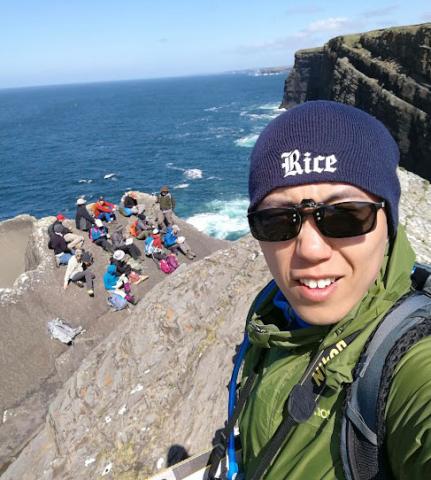
My area of research expertise focuses on the impact of fluvial-deltaic surface processes on the development of Earth and Martian sedimentary stratigraphy and the significance of the depositional record for informing future environmental changes. My research aims to bridging sedimentology, geomorphology, surface processes, stratigraphy, and landscape evolution by examining both modern and ancient sedimentary environments. To achieve this goal, I use numerical models, physical experiments, geophysical survey methods, remote sensing, and geological survey techniques.